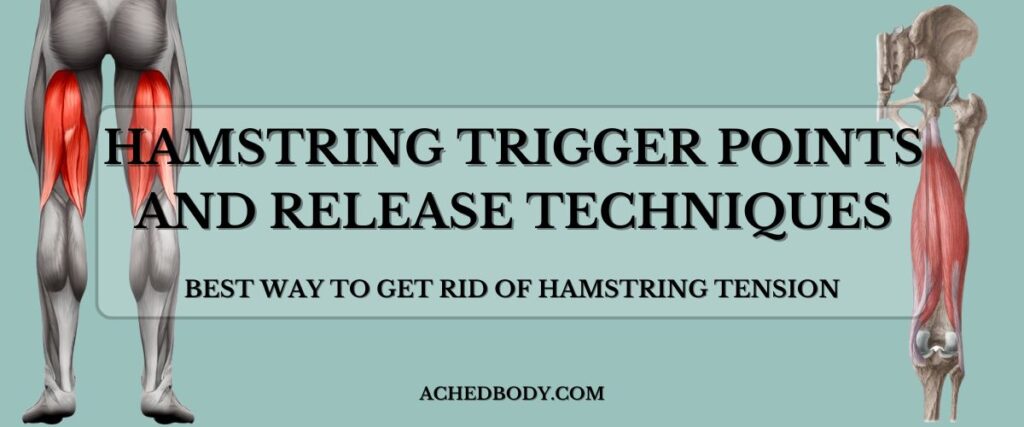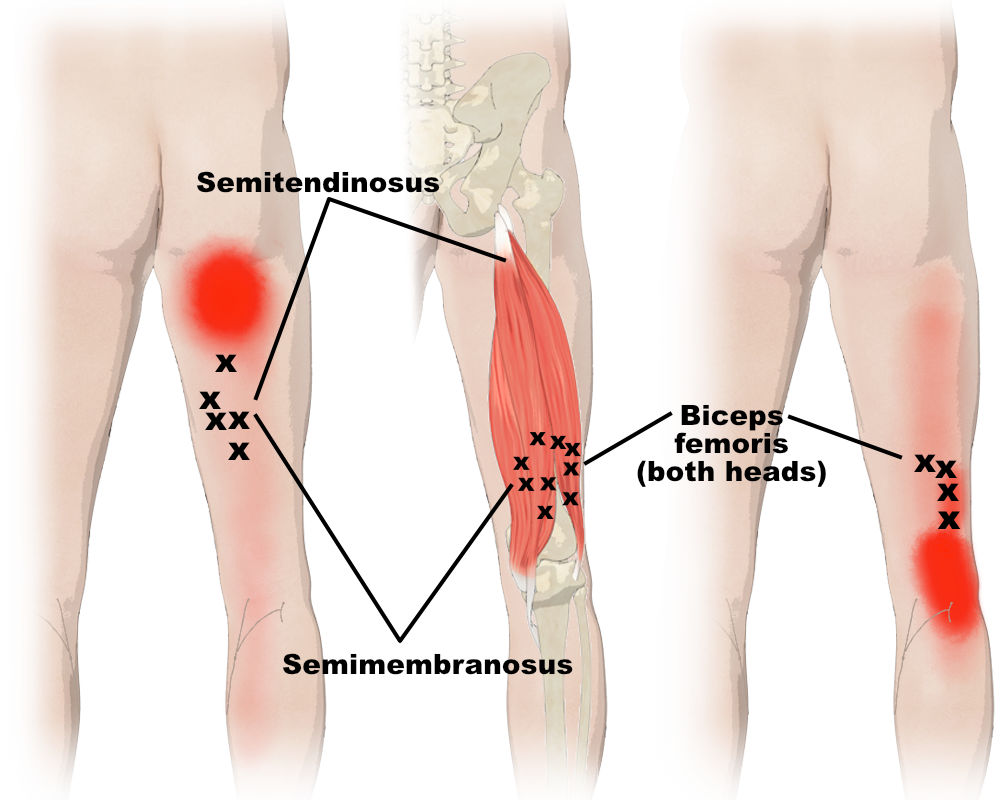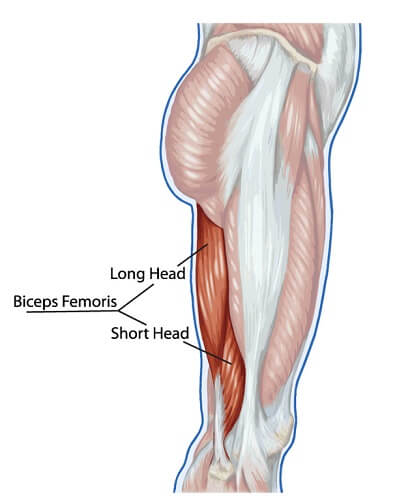
Get Rid Of Hamstring Tension With Trigger Point Techniques
This article is going to teach you how to relieve your hamstring tightness or pain with trigger point therapy.
When you build this into your warm-up and daily routine, you will notice a difference in performance and daily life.
Pair it with some stretches from the Ultimate Stretch Guide or my tailored hamstring stretching article for the most benefit.
Get the Ultimate Guide to Trigger Point Therapy here!

Understanding Trigger Points in the Hamstrings
The hamstrings are very powerful muscles and can be on the receiving end of a lot of trauma through fast actions like running. And if you’ve never treated them, the muscle adhesions will build up and become knots in the muscle tissue.
On top of that, the muscles are often shortened in adults due to prolonged sitting, which puts the muscles in a shortened position where they adapt and physically shorten themselves as a result.
Trigger points can also emerge due to overuse, strain from repetitive activities, or improper training techniques.
This will lead to pain in your hamstrings and other areas. It can also lead to muscle strains or tears.
The next section goes in depth on how to locate and get rid of trigger points for a more pliable and healthy muscle.
Self-Release Techniques for Hamstring Trigger Points

There is only one way I recommend trigger pointing your hamstrings because there is no other method that is even close to being as effective as this.
First you need something to sit on top of that allows your legs to dangle. If your feet can reach the floor then you are too low!
Sit on it and place a lacrosse ball or tennis ball (less intense) under 1 leg.
I start closer to my knee on the lateral (outside) muscle seen in the image to the right.
Then I look for tight spots. Here’s how…
All I do is slowly roll up the muscle while shifting the muscle side to side, as if I am strumming a string on a guitar.
Back and forth.
You’ll notice spots that don’t move as freely as others, or spots that burn a little extra as you go up the muscle.
This is a good thing!

That means you found an inefficient spot in the muscle that is holding it back from performing at its best and is adding to the tension you feel throughout your leg and up to your back!
I like to stay on the biceps femoris all the way up as far as I can go before moving to the next hamstring muscle and doing the same thing.
Sometimes, as I find tight spots, I will stop moving the ball and breathe into the pressure to break up the adhesion.
It works like a charm.
Other times, I will go over all 3 of the hamstring muscles before going back to the tightest spots to apply deeper pressure.
I hope that makes sense, but take a look at the video to see what I mean! And feel free to ask any questions in the comments below!!
P.S. You can also foam roll your hamstrings!
Integrating Techniques into Your Routine
In order to change, you will have to add this into your daily routine for a while. Once you are over the initial adjustment period, you’ll be able to do it less as a weekly or bi-weekly maintenance.
You can supercharge the effects of the trigger pointing by pairing it with a hamstring stretch. Stretching after a trigger point has been pressured for 30 to 60 seconds is the best way to help the muscle reintegrate into normal movement patterns.
What’s Next
This may seem like a minor issue, but over time, tight hamstrings will pull on your hips and knees which will create issues in other areas of your body.
Fixing your hamstrings will get you one step closer to a pain free life and help you take on anything.
Please use this guide as well as my hamstring stretching guide and other hamstring related content to help you on your journey.
As always, my Ultimate Guide to Trigger Pointing and Ultimate Guide to Stretching are available as your go-to resources.
Good luck and let me know if you need anything in the comments below!
-Nick